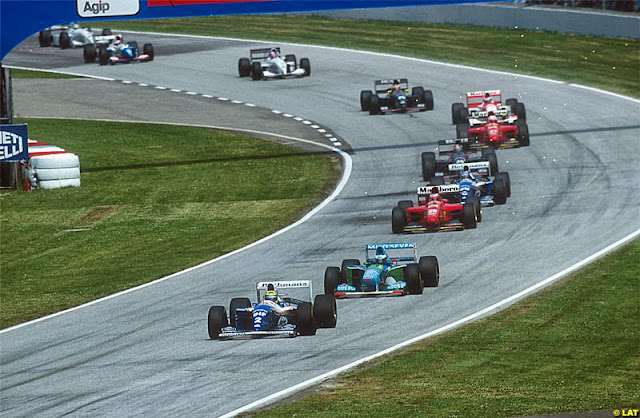The Williams team was entangled for many years in a court case with the Italian prosecutors over manslaughter charges, ending in a guilty verdict for Patrick Head.
The Italian Court of Appeal, on April 13, 2007, stated the following in the verdict numbered 15050: “It has been determined that the accident was caused by a steering column failure. This failure was caused by badly designed and badly executed modifications. The responsibility of this falls on Patrick Head, culpable of omitted control”. Even being found responsible for Senna’s accident, Patrick Head wasn’t arrested: in Italy the statute of limitation for manslaughter is 7 years and 6 months, and the final verdict was pronounced 13 years after the accident.
A 600-page technical report was submitted by Bologna University under Professor of Engineering Enrico Lorenzini and his team of specialists. The report concluded that fatigue cracks had developed through 70% of the steering column at the point where it had broken. Lorenzini stated: “It had been badly welded together about a third of the way down and couldn’t stand the strain of the race. We discovered scratches on the crack in the steering rod. It seemed like the job had been done in a hurry but I can’t say how long before the race. Someone had tried to smooth over the join following the welding. I have never seen anything like it. I believe the rod was faulty and probably cracked even during the warm-up. Moments before the crash only a tiny piece was left connected and therefore the car didn’t respond in the bend.”
Senna did not like the position of the steering column relative to his seating position and had repeatedly asked for it to be changed. Patrick Head and Adrian Newey agreed to Senna’s request to lengthen the FW16′s steering column, but there was no time to manufacture a longer steering shaft. The existing shaft was instead cut, extended by inserting a smaller-diameter piece of tubing and welded together with reinforcing plates. Many surmise, based on the “yellow button tracking analysis” done in 1997 by CINECA that the movement of the steering wheel during the final seconds into Tamburello was abnormal. A reference point (yellow button) on the onboard video is seen to move several centimetres in its own plane, due to the steering wheel moving up and down, indicating a fully or partially buckled steering column.
Williams released its own video to prove the movement was normal by Coulthard manhandling an FW16B steering wheel, yet the effort required by Coulthard to deflect the wheel in the demonstration is termed to be “quite considerable”. The nature of Tamburello requiring a light and anticipatory grip on the wheel (because of the high speed and bumps) coupled with Senna’s slight frame causes some to question whether or not the movement of the yellow button was indeed as “normal” as Williams has claimed.
No known analysis has been done on the tracking of the yellow button at other laps of the FW16 around Imola or other racing circuits.
During the trials, Fabrizio Nosco, a Regional technical commissioner, testified that both of the vehicle’s black boxes were intact, except for minor scratches. He said “I have seen thousands of these devices and removed them for checks. The two boxes were intact, even though they had some scratches. The Williams device looked to have survived the crash.”. In a move that apparently breached FIA regulations, Charles Whiting, a FIA official, handed the black boxes to Williams before the regulating body’s own investigation into the accident. Williams claimed the black boxes were unreadable, and the boxes returned for the court proceedings were indeed unreadable, a full month after the accident. The black boxes might have put to rest the cause of the accident.
At the conclusion of the Italian trial, Senna’s FW16, chassis number 02, was returned to the Williams team. The team reported that the car was in an advanced state of deterioration and was subsequently destroyed. The car’s engine was returned to Renault, and its fate is unknown.
His death was considered by many of his Brazilian fans to be a national tragedy, and the Brazilian government declared three days of national mourning. Senna is buried at the Cemitério do Morumbi in his hometown of São Paulo.
Source: http://www.sennafiles.com/ayrton-senna/death/investigation-and-trial/







No comments:
Post a Comment